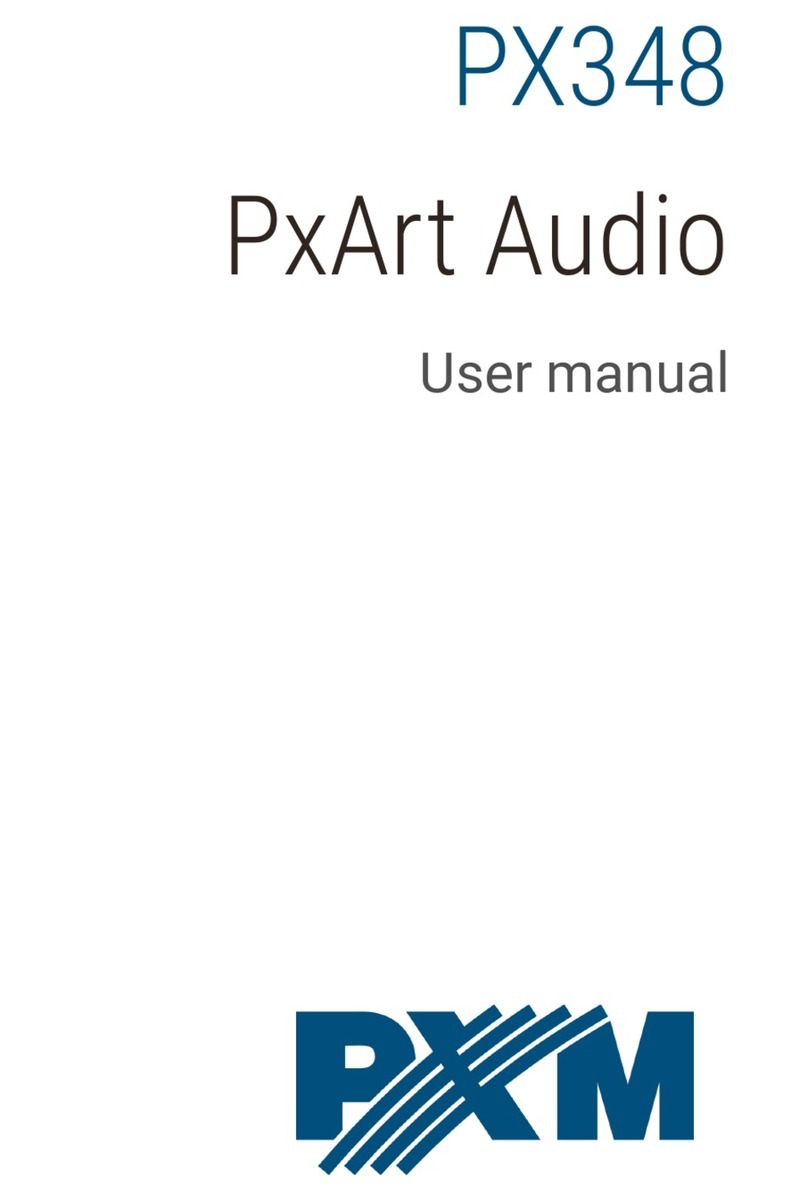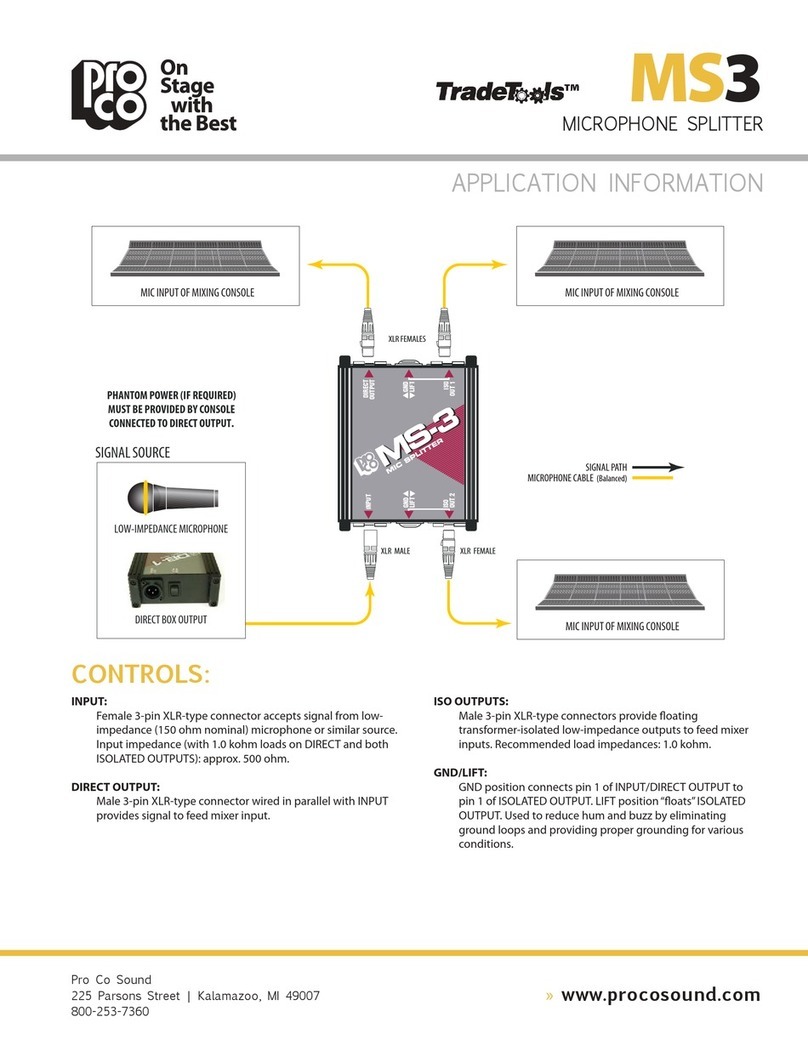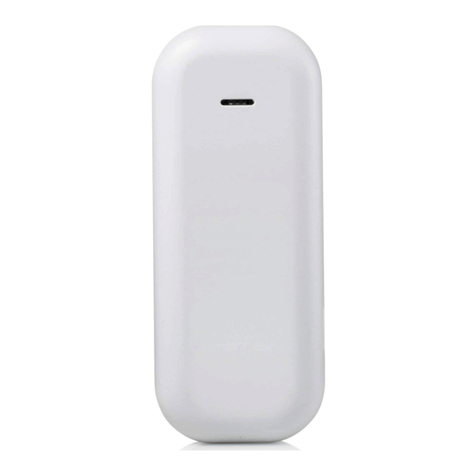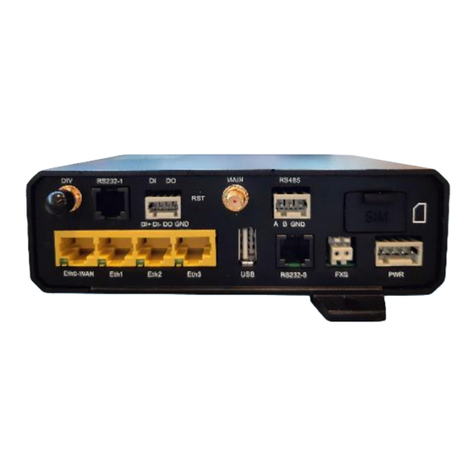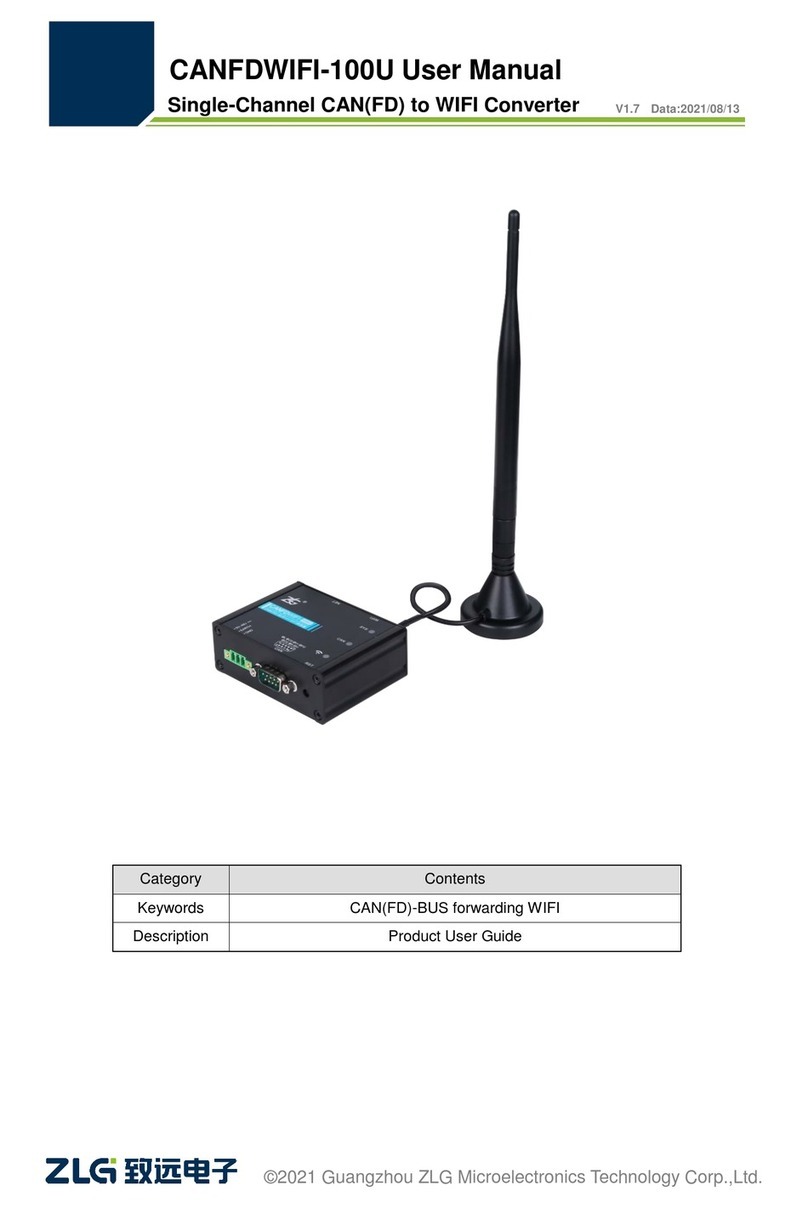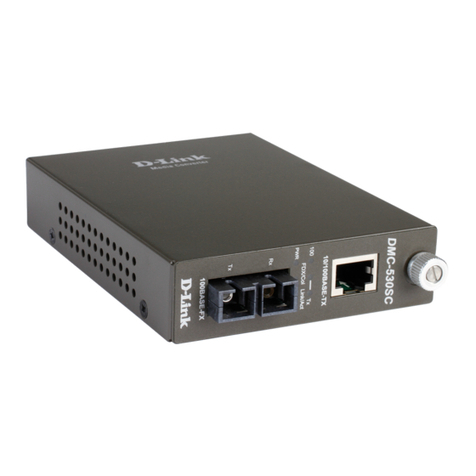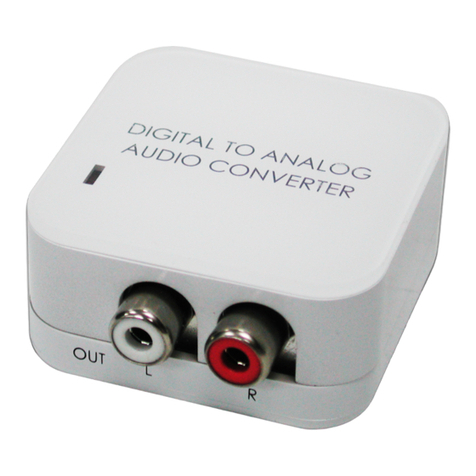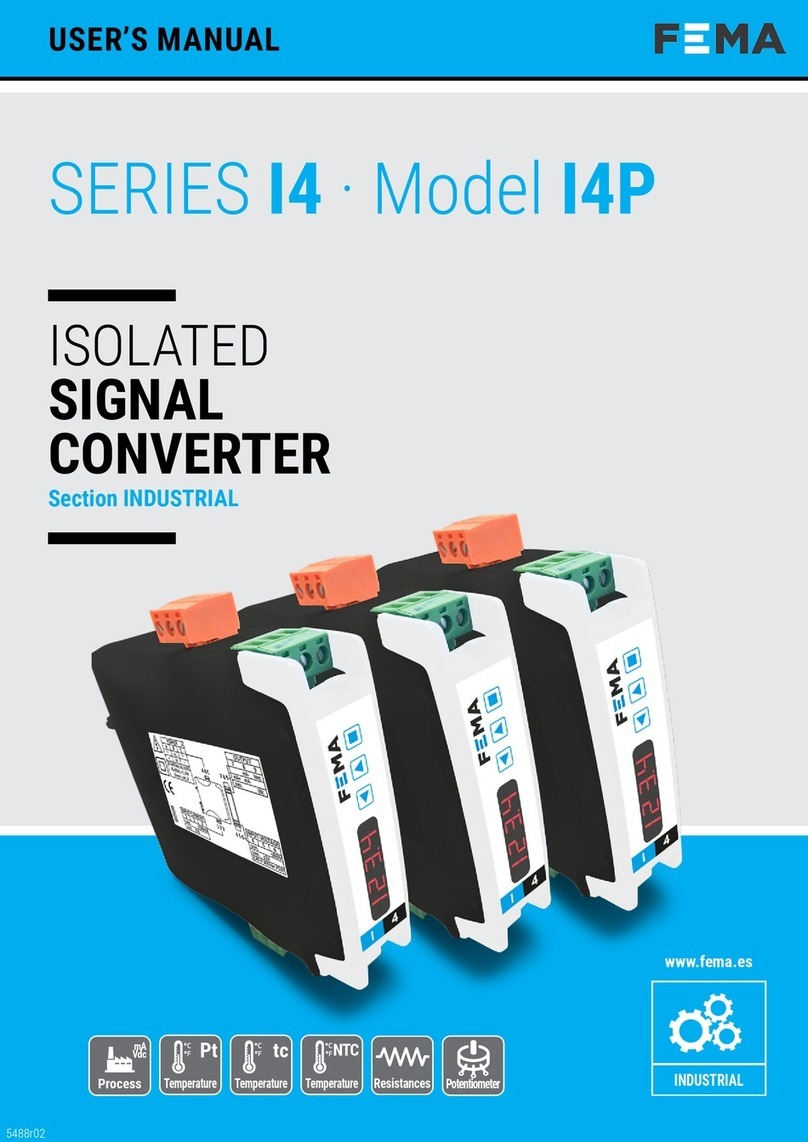TC Communications TC3301 User manual

-1-
TC3301 User's Manual
Rev. 1.4
TC3301
1000Base-T Ethernet Fiber Optic Converter
User's Manual
1. Features
p1000Mbps for twisted pair, and 1000Mbps for fiber
pLocal Dry Contact Alarm Relay
pMultimode (850nm) and Single Mode (1310nm/1550nm)
pOptional Hi-Temp -20°C to 70°C
p1000Mbps Full duplex, 1000Base-T, 1000Base-SX/LX
pDistances up to 100km
pOptional Two-way Single Fiber Communication
pBuilt-In Power Redundancy
pFits Category 5E or 6 Ethernet Cable
pStandalone or Rackmount
© COPYRIGHT 1992-2009. ALL RIGHTS RESERVED.
TC Communications, Inc. 17881 Cartwright Road - Irvine, CA 92614
3. Description
Featuring an “Industrial-Hardened” version for extreme environments, the TC3301 Gigabit Ethernet Fiber
Optic Converter supports distances up to 100km and is available with a 2-way single fiber option.
The TC3301 is IEEE802.3z/AB complaint. It converts or connects 1000Base-TX unshielded twisted-pair
devices (e.g. network bridges, switches, or workstation cards) to single mode (1300/1550nm) or multimode
(850nm) fiber optics.
Completely transparent to the network, the TC3301R/S is ideal for integrating UTP and fiber optics in any
Gigabit Ethernet network. It is designed with modern Field Programmable Gate Array (FPGA) technology
and operates efficiently even during high-demand traffic loads.
It is available in two temperature versions: 0°C to 50°C; -20°C to 70°C; The Industrial-Hardened version
exceeds all pertinent Utility and Traffic Control environmental and temperature specifications.
Diagnostics include 8 LEDs for Ethernet settings and Ethernet/Power status. Dry contact alarms are
provided for connection to remote network management systems. It is available standalone or rack mount.
The TC3301S is the standalone/wallmount unit. The TC3301R rackmount version fits into the Model
TCRM192 or 19" rackmount card cages.
Fiber optic connectors are ST, SC and FC. The UTP connector is RJ-45 female. Power is 12VDC @ 600mA
(standard); optional power sources include 24VDC, -48VDC, 125VDC, or 115/230VAC with an external
power cube.
2. Standards
IEEE 802.3ab 1000Base-T, IEEE 802.3z 1000Base-SX/LX and TIA/EIA-785

-2-
TC3301 User's Manual
Rev. 1.4
*Launch power, sensitivity and distance are listed for reference only. These numbers may vary. Contact factory for
higher loss budgets and ST & FC fiber connector types (SC fiber connectors are standard).
4. Optical Specifications
Multimode 850nm, 275/550 Meter Option
Transmitter: FP LASER; typical Launch Power: -10.0 dBm @850nm
Receiver: PIN Diode; typical Sensitivity: -18.0 dBm @850nm
Optic saturation level: 0 dBm @850nm
Loss Budget: Multimode (50/125µm)@850nm: 8 dB
Multimode (62.5/125µm)@850nm: 8 dB
Distance: Multimode (50/125µm)@850nm: up to 550 Meter distance*
Multimode (62.5/125µm)@850nm: up to 275 Meter distance*
Wavelength: Multimode 850nm:
Connector*:ST
FC
SC
Multimode 1310nm, 2km Option
Transmitter: FP LASER; typical Launch Power: -6.0 dBm @1310nm
Receiver: PIN Diode; typical Sensitivity: -16.0 dBm @1310nm
Optic saturation level: 0 dBm @1310nm
Loss Budget: Multimode (50 or 62.5/125µm)@1310nm: 10 dB
Distance: Multimode (50 or 62.5/125µm)@1310nm: up to 2km distance*
Wavelength: Multimode 1310nm:
Connector*:ST
FC
SC
Single Mode 1310nm, 20km Option
Transmitter: FP Laser; typical Launch Power: -10 dBm @1310nm
Receiver: PIN Diode; typical Sensitivity: -20.0 dBm @1310nm
Optic saturation level: -3 dBm @1310nm
Loss Budget: Single Mode (9/125µm)@1310nm: 10 dB
Distance: Single Mode (9/125µm)@1310nm: up to 20 km distance*
Wavelength: Single Mode 1310nm (LASER):
Connector*:ST
FC
SC
Single Mode 1550nm, 50km Option
Transmitter: FP Laser; typical Launch Power: -4dBm @1310nm
Receiver: PIN Diode; typical Sensitivity: -23.0 dBm @1310nm
Optic saturation level: -3 dBm @1310nm
Loss Budget: Single Mode (9/125µm)@1310nm: 19dB
Distance: Single Mode (9/125µm)@1310nm: up to 50km distance*
Wavelength: Single Mode 1310nm (LASER)
Connector*:ST
FC
SC

-3-
TC3301 User's Manual
Rev. 1.4
Single Mode 1550nm, 80km Option
Transmitter: Typical Launch Power: 0 dBm @1550nm
Receiver: PIN Diode; typical Sensitivity: -24.0 dBm @1550nm
Optic saturation level: 0 dBm @1550nm
Loss Budget: Single Mode (9/125µm)@1550nm: 24 dB
Distance: Single Mode (9/125µm)@1550nm: up to 80km distance*
Wavelength: Single Mode 1550nm :
Connector*: ST
FC*
SC
Single Mode 1550nm, 120km Option
Transmitter: DFB Laser; typical Launch Power: 0dBm @1550nm
Receiver: PIN Diode; typical Sensitivity: -32.0 dBm @1550nm
Optic saturation level: -9dBm @1550nm
Loss Budget: Single Mode (9/125µm)@1550nm: 32dB
Distance: Single Mode (9/125µm)@1550nm: up to 120km distance*
Wavelength: Single Mode 1550nm (LASER)
Connector*:ST
FC
SC
Single (One) Fiber, 40km Model
Transmitter: Typical Launch Power -3 to + 2 dBm* (1310nm/1550nm, @9/125µm)
Receiver: PIN Diode; typical Sensitivity -23 dBm* (1310nm/1550nm, @9/125µm)
Optic saturation level -3 dBm*
Loss Budget: 1310nm/1550nm Single Mode, @9/125µm 20 dB
Distance: 1310nm/1550nm Single Mode, @9/125µm up to 40km distance*
Wavelength: 1310nm/1550nm Single Mode
Connector: SC Only*
*Launch power, sensitivity and distance are listed for reference only. These numbers may vary. Contact factory for
higher loss budgets and ST & FC fiber connector types (SC fiber connectors are standard).

-4-
TC3301 User's Manual
Rev. 1.4
These are the reference values we use to calculate the loss on the fiber:
Multimode 850nm :3 dB loss per km on 62.5/125µm cable*
Multimode 1310nm :2 dB loss per km on 62.5/125µm cable*
Single Mode 1310nm :0.5 dB loss per km on 9/125µm cable*
Single Mode 1550nm :0.25 dB loss per km on 9/125µm cable*
5. Optic Cable Types
Conventionally, fiber optic cable withyellow-coloredinsulation is used for Single Mode applications;gray
or orange-coloredinsulated cable is for Multimode use. If Multimode cable is used in a Single Mode
application, the test results could be erroneous and confusing.
6. Calculating the Loss on the Fiber
The fiber optic link and/or connectors are frequently the source of various problems. Check out the
connectors and the integrity of the link first. Ideally, the link should be calibrated for total loss after the
installation has been completed. This will accomplish two things: (1) it will verify that the total loss of the link
is within the loss budget of the device and (2) it will provide a benchmark for future testing. For example,
a system that has been tested as having 6dB total loss when installed and suddenly tests out as having a loss
of 10dB probably has a connector or link problem.
*These numbers are listed for reference only. We recommend an OTDR reading be used to determine actual link loss.

-5-
TC3301 User's Manual
Rev. 1.4
7. Connectors, Indicators and DIP Switches
Figure 1. TC3301's Front Panel
8. Power Requirements
A. Standard input power to the TC3301's is 12VDC @600mA.
B. The TC3301's power connectors are two terminal blocks located on the rear panel of the unit. Polarity
is indicated under each connector block (see Figure 2).
C. Should an external power adapter need to be replaced, use one with the following specifications: 12VDC
@600mA. You may order it directly from TC Communications.
D. The TC3301 can also be ordered with an optional 24VDC, 48VDC, 125VDC or 115/230VAC with an
external power cube.
Figure 2. TC3301's Rear Panels
ALARM
PWR
APWR
B
+ -
+ -
12VDC 24VDC 48VDC
+5V Voltage indicator.
This LED should light whenever power
is connected to the unit. It indicates the
correct operating voltage is being derived
from the power source.
Full Duplex LED indicator:
Solidly lit, when Ethernet signal
is in 1000M full duplex mode.
Link LED indicator:
Solidly lit, when the twisted pair port has
established a valid link.
Optic transmitter and receiver
Fiber Optic Link Status LED:
Lit while receiving an optical
signal at the optical receiver (Rx).
Power A & Power B LEDs: The power source can be redundant:
both Power A and Power B share the load. If either
power source fails, the other one takes over full load.
RJ-45 for UTP input
Not used.
R
J
-
4
5
NOTUSED
1
0
0
0
B
a
s
e
-
T
E
t
h
e
r
n
e
t
F
i
b
e
r
M
e
d
i
a
C
o
n
v
e
r
t
e
r
T
x
R
x
O
P
T
I
C
Mad
e
i
n
U
.
S
.
A
.
TCCOMM.COM
Activity LED indicator:
Lit when there is Ethernet activity
detected through the RJ-45 port.
Note: As the Ethernet activity going through
the RJ-45 port becomes greater, this LED
will become brighter.
1000M LED indicator:
This LED will always be lit
since the media converter
operates at a fixed 1000Mbps.

-6-
TC3301 User's Manual
Rev. 1.4
9. Installation
A. Connect the standard 12VDC power supply to the TC3301 (24VDC, 48 VDC, 125VDC or 115/230VAC
with an external power cube are optional).
B. The "PWRA," and/or "PWRB," "1000M," "Vcc," LEDs should be lit.
C. Use CAT 5E or 6 UTP cable to connect the TC3301 RJ-45 port to the 1000Base-T Port of your network
device. The "FDX," and "LNK," LEDs will be lit. If the LEDs are "Off," please verify the cable
connection and the power of the network device.
D. Connect the optic cables according to the example diagrams shown on page 7. For example, on diagram
C;the localTC3301's optic"Tx" shouldbe connectedto theremote networkdevice's optic"Rx" andvice-
versa.
E. After step "D," the "FO" LED should light to indicate that the optical idle signal is being received.
F. Create some activity on the Ethernet, the "ACT" LED should be lit.
Note: As the Ethernet activity going through the RJ-45 port becomes greater, this LED will become brighter.
G. Double-check all LEDs according to the following:
The "PWRA," and/or "PWRB," "Vcc," "FO," "1000M," "FDX," "LNK," and "ACT" LEDs should be lit.
The "FO" LED will be lit when the optic side has activity and/or fiber optic cables are connected.
The "ACT" LED will be lit when the UTP side has activity.

-7-
TC3301 User's Manual
Rev. 1.4
10. Dry Contact Relay Alarm
Aterminal blockconnector on therear panel(labeled "ALARM")
provides for the dry contact relay alarm (see Figure 2). Normally
in the OPEN position, any loss of optical signal will trigger an
alarm condition and force the switch to the CLOSED position.
This relay can be used in conjunction with an external device to
monitor the condition of the fiber optic links.
11.Electrical Specifications
Data Rates: 1000Mbps
Connector: RJ-45 Female
12.Temperature
Operating .............................................................................................................................. 0oC to 50oC
.......................................................................................................... Hi-Temp (Optional) -20oC to 70oC
Humidity................................................................................................................ 95% non-condensing
13.Physical Characteristics
Height: 1.4" (3.5 cm) Depth: 6.5" (16.5 cm)
Width: 7.1" (18 cm) Weight: 1.1 lbs. (501 gm)
14.Troubleshooting
After installation is complete, only the "PWRA," and/or "PWRB," "Vcc," "LNK," "FO," "1000M," and "FDX"
LEDs should be lit. If not, please check the following:
Power Problem:
No LEDs are lit:
A. "PWRA" and/or "PWRB" LEDs should be on when power is connected. If both are "Off," then no DC
power is reaching the unit. Check the power supply, source, and polarity.
B. If "PWRA," and/or "PWRB," "Vcc," or "1000M" LEDs are "On" but all other LEDs are "Off", and the
Alarm switch is not closed, it indicates an internal problem with the unit. For assistance, please contact
the Technical Support Department at TC Communications @ (949) 852-1973.
Electrical Problem:
If the LNK or FDX LEDs are Off:
It means that there is no Ethernet electrical signal detected by the TC3301. Check the electrical
connections on the Cat 5E or 6 cable. Make sure that there's Ethernet signal being provided and that the
signal is 1000M. Also, check that the Ethernet cable is good.
Optical Problem:
The "FO" LED should be lit at all times to indicate good optic transmit and receive conditions and good cable
connections.
If the FO LED is OFF:
A. Optic power received by "Rx" is lower than the typical sensitivity.
B. Optic "Tx" is connected to another TC3301's "Tx." Check the optic cable connection; the local unit's optic
"Tx" should be connected to the remote unit's optic "Rx."
C. Optic cable type is incorrect. Typically, fiber optic cable with yellow-colored insulation is designated for
Single Mode use @8.2µm or 9µm; orange or gray-colored cable is for Multimode use @50µm or 62µm.
If the wrong cable type is used, the unit will not function properly.
Dry Contact Relay
Alarm Switch
To remote alarm status indicator
Maxswitchvoltage:100VDC
Switch current: 0.5Amp
Max carry current: 1.2Amp
Contactresistance:0.2Ohm
Reply switch specifications

-8-
TC3301 User's Manual
Rev. 1.4
15. Typical Application Examples:
Three installation examples for the TC3301 units are shown on the diagrams below. Make the proper copper
and fiber optical connections as shown on the diagrams.
B. Fiber to Fiber over Copper:
Connect your optical switches "Tx" to the "Rx" of the TC3301 and vice-versa on both ends.
A. Copper to Copper over Fiber:
Make sure you connect the local TC3301's "Tx" to the remote TC3301's "Rx" and vice-versa.
C. Copper to Fiber:
Connect the optical cables according to the diagram below, the local TC3301's optic "Tx" should be connected
to the remote network device's optic "Rx" and vice-versa.
TC3301
Switch
TC3301
1000MbpsFixed
1000MbpsFixed
Fiber Cables
UTP
Cable UTP
Cable
RxRx
Tx Tx
Switch
TC3301
Switch
TC3301
1000Mbps Optical
Switch
1000Mbps Optical
Switch
Fiber Cables Fiber Cables
UTP
Cable
Rx Rx
Rx
Rx Tx Tx
Tx
Tx
Switch
TC3301
Switch
1000Mbps Optical
Switch
1000MbpsFixed Fiber Cables
Rx
Rx
Tx
Tx
UTP
Cable
Switch

-9-
TC3301 User's Manual
Rev. 1.4
16. Return Policy & Warranty
Return Policy
To return a product, you must first obtain a Return Material Authorization number from the Customer
Service Department. If the product’s warranty has expired, you will need to provide a purchase order
to authorize the repair. When returning a product for a suspected failure, please provide a description
of the problem and any results of diagnostic tests that have been conducted.
Warranty
Damages by lightning or power surges are not covered under this warranty.
All products manufactured by TC Communications, Inc. come with a five year (beginning 1-1-02)
warranty. TCCommunications, Inc.warrants tothe Buyerthatall goodssold willperform inaccordance
with the applicable data sheets, drawings or written specifications. It also warrants that, at the time of
sale, the goods will be free from defects in material or workmanship. This warranty shall apply for a
periodoffive yearsfromthedate ofshipment,unlessgoods havebeensubjectto misuse,neglect,altered
or destroyed serial number labels, accidents (damages caused in whole or in part to accident, lightning,
power surge, floods, fires, earthquakes, natural disasters, or Acts of God.), improper installation or
maintenance, or alteration or repair by anyone other than Seller or its authorized representative.
Buyershould notifyTC Communications,Inc. promptlyin writingof anyclaim basedupon warranty,
and TC Communications, Inc., at its option, may first inspect such goods at the premises of the Buyer,
or may give written authorization to Buyer to return the goods to TC Communications, Inc., transportation
charges prepaid, for examination by TC Communications, Inc. Buyer shall bear the risk of loss until all
goodsauthorized to bereturned are deliveredto TC Communications,Inc. TCCommunications, Inc. shall
not be liable for any inspection, packing or labor costs in connection with the return of goods.
Inthe eventthatTC Communications,Inc. breachesitsobligation ofwarranty, thesoleand exclusive
remedy of the Buyer is limited to replacement, repair or credit of the purchase price, at TC
Communications, Inc.’s option.
To return a product, you must first obtain a Return Material Authorization (RMA) number and RMA
form from the Customer Service Department. If the product’s warranty has expired, you will need to
provide a purchase order to authorize the repair. When returning a product for a suspected failure, please
fill out RMA form provided with a description of the problem(s) and any results of diagnostic tests that
have been conducted. The shipping expense to TC Communications should be prepaid. The product
should be properly packaged and insured. After the product is repaired, TC Communications will ship
the product back to the shipper at TC's cost to U.S. domestic destinations. (Foreign customers are
responsible for all shipping costs, duties and taxes [both ways]. We will reject any packages with airway
bill indicating TC communications is responsible for Duties and Taxes. To avoid Customs Duties and
Taxes, please include proper documents indicating the product(s) are returned for repair/retest).
Table of contents
Other TC Communications Media Converter manuals
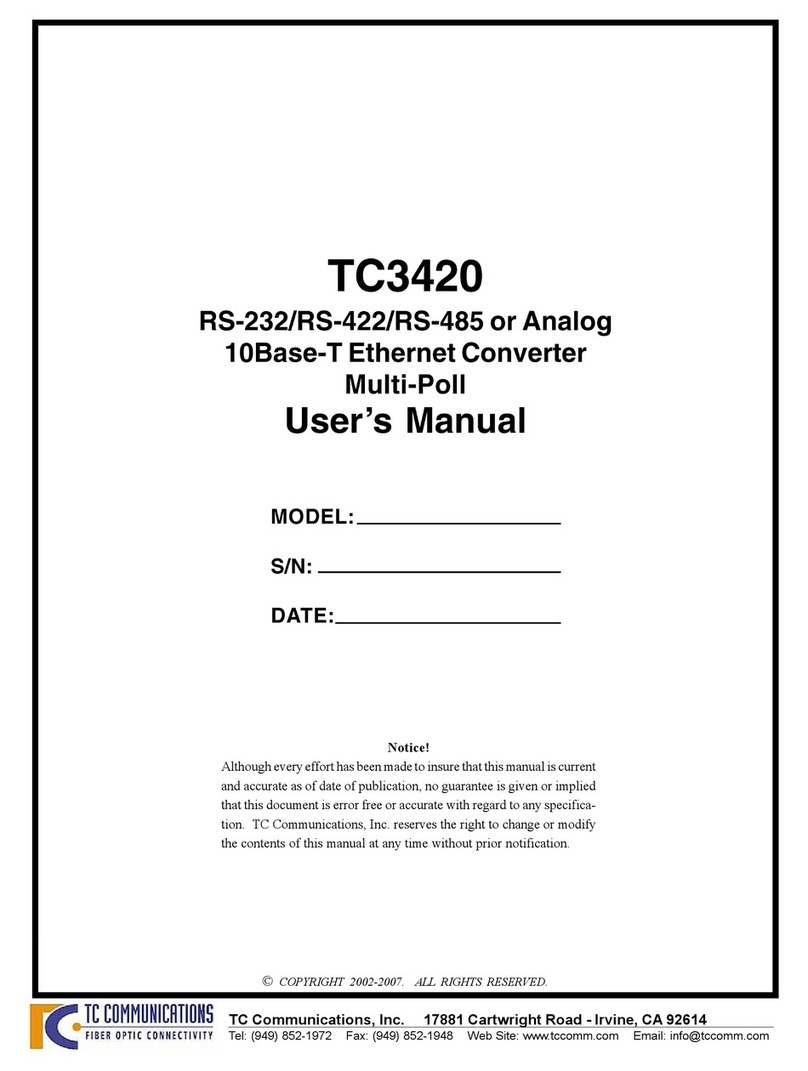
TC Communications
TC Communications TC3420 User manual
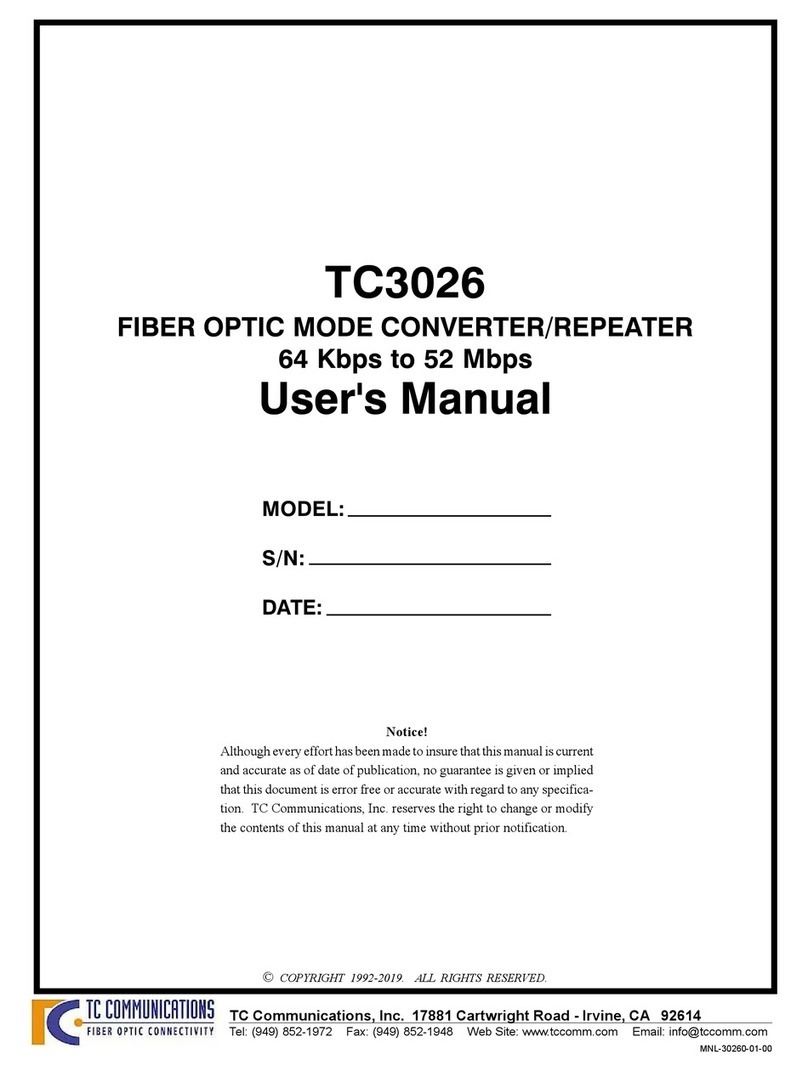
TC Communications
TC Communications TC3026 User manual
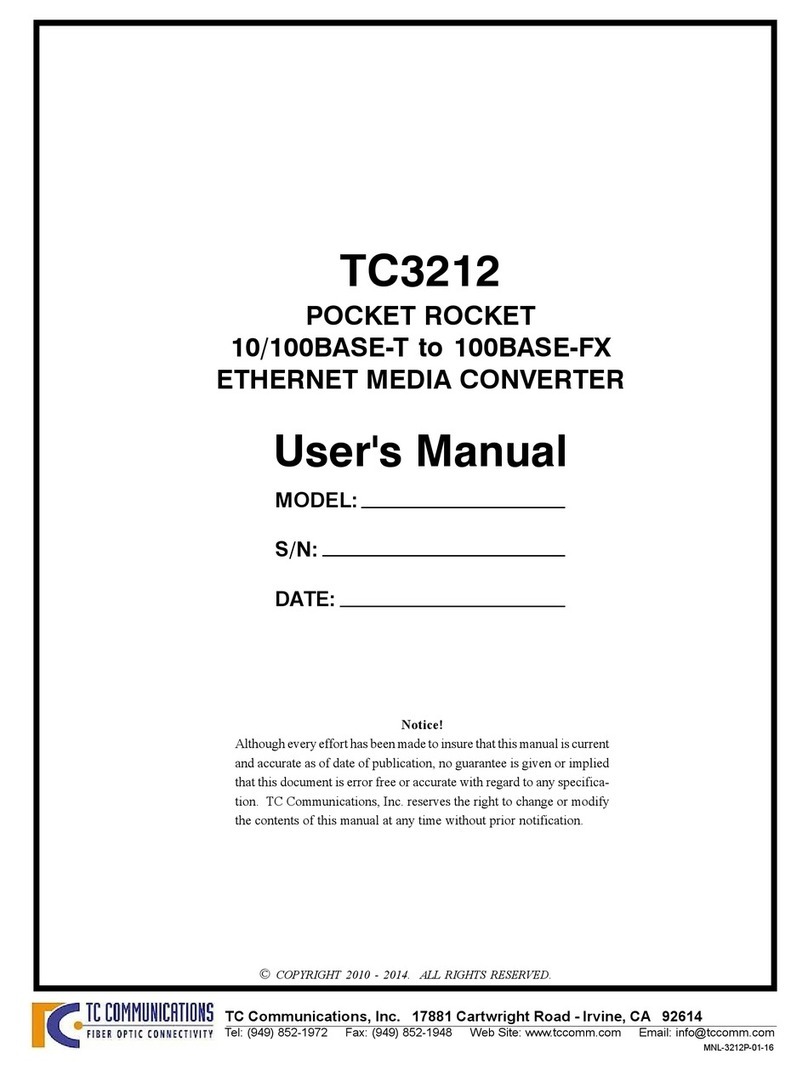
TC Communications
TC Communications TC3212 User manual
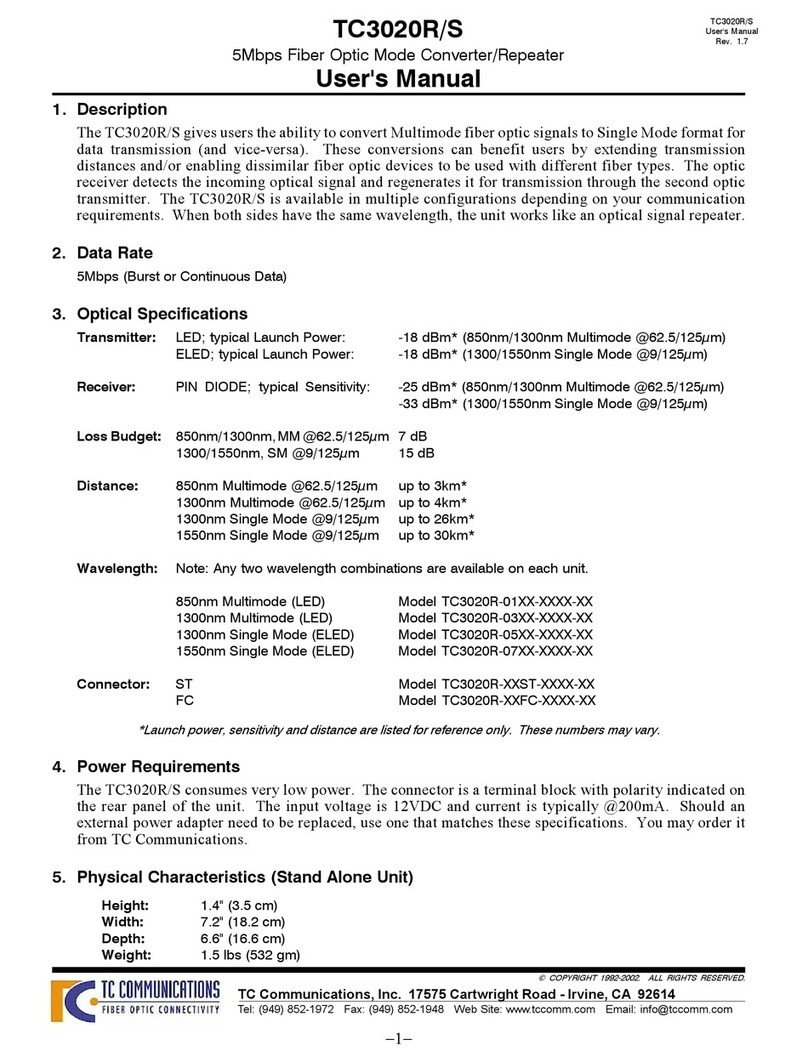
TC Communications
TC Communications TC3020R User manual
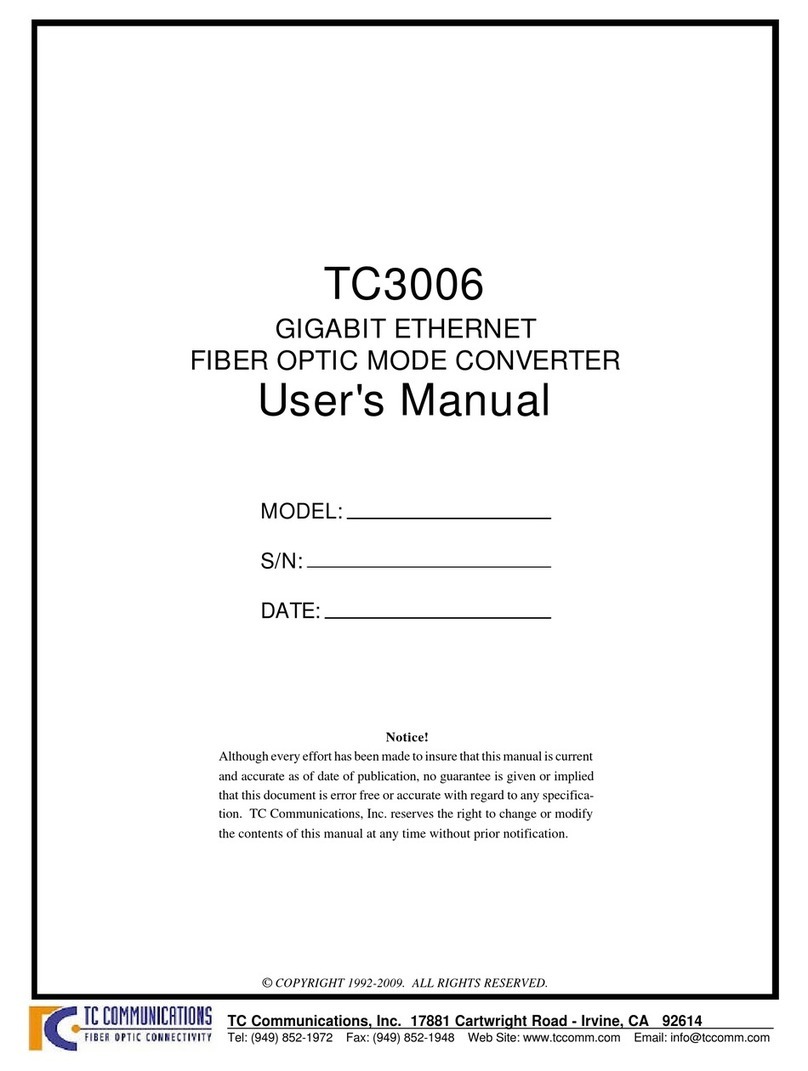
TC Communications
TC Communications TC3006 User manual
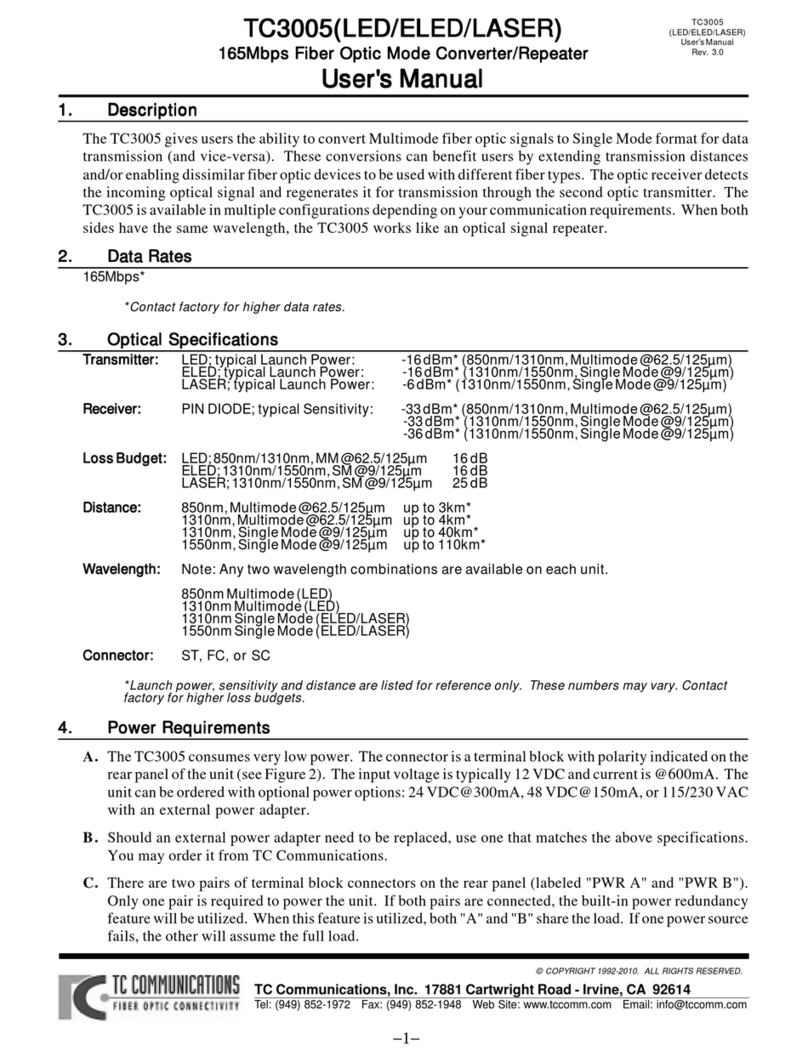
TC Communications
TC Communications TC3005 User manual
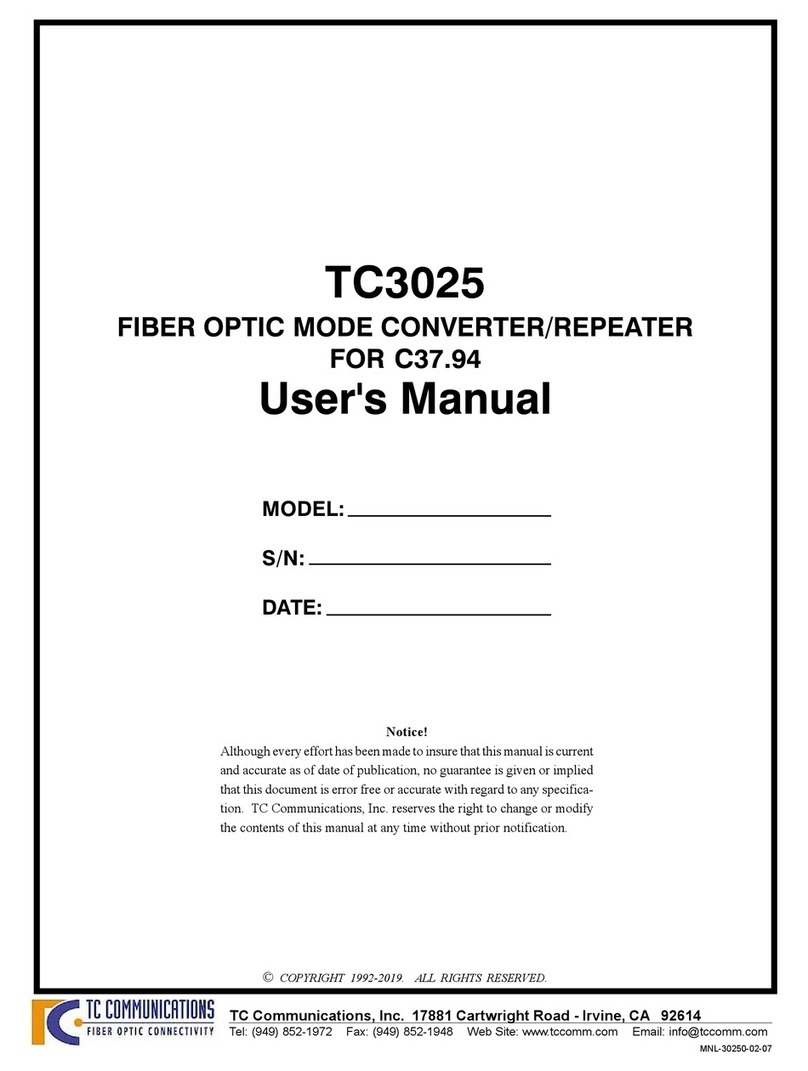
TC Communications
TC Communications TC3025 User manual
Popular Media Converter manuals by other brands
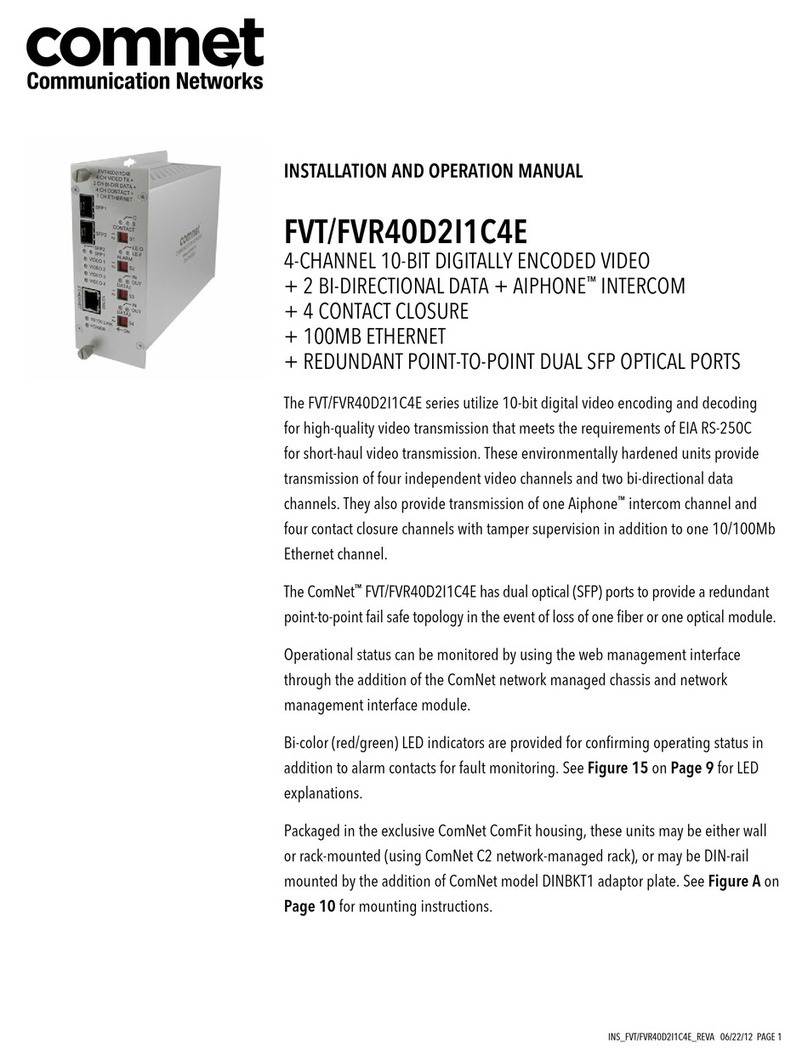
Comnet
Comnet FVT40D2I1C4E Installation and operation manual
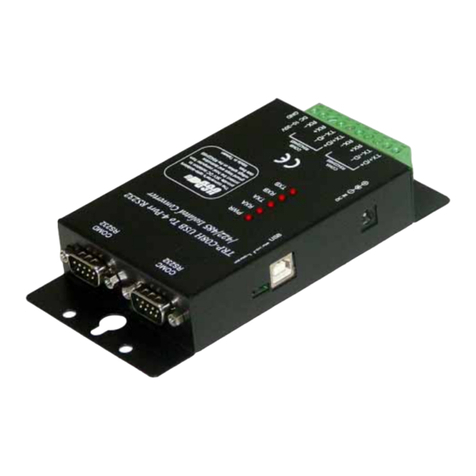
Trycom Technology
Trycom Technology TRP-C08H user manual
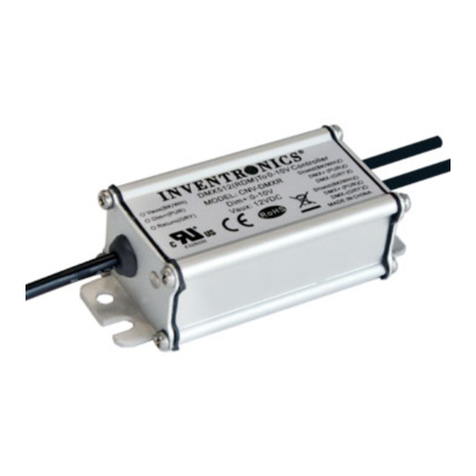
Inventronics
Inventronics CNV-DMXR user manual
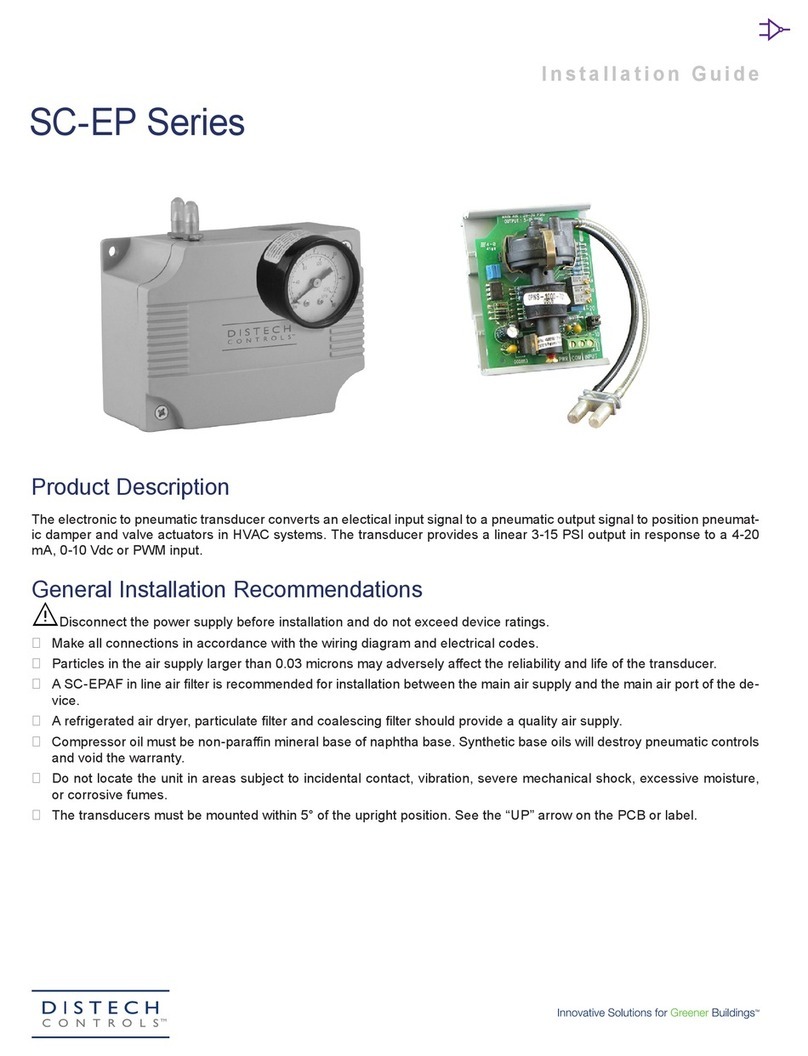
Distech Controls
Distech Controls SC-EP Series installation guide

Goobay
Goobay 20365 user manual
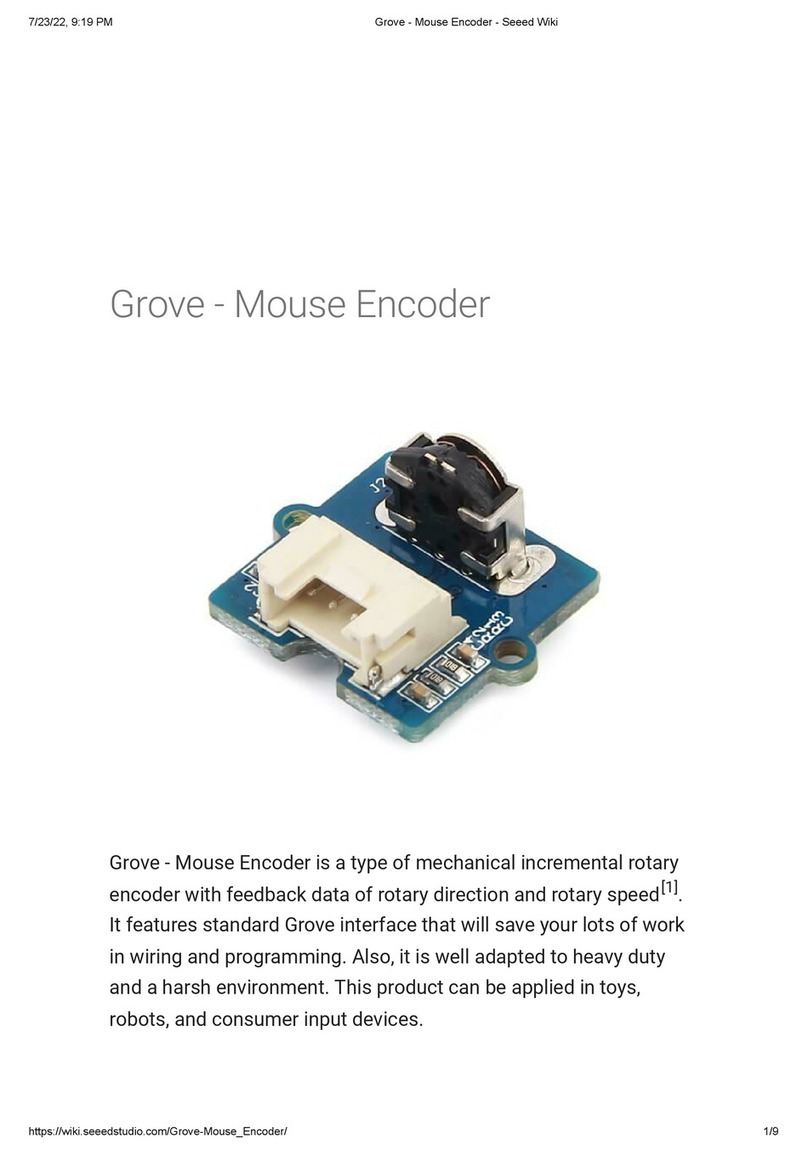
Seeed
Seeed Grove - Mouse Encoder quick start guide

